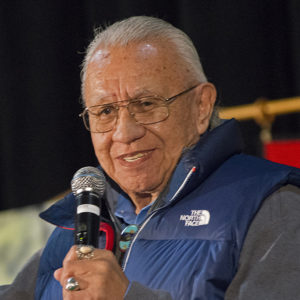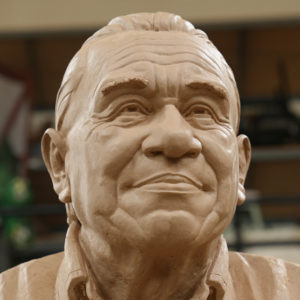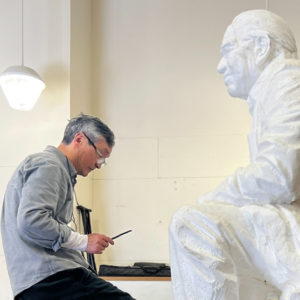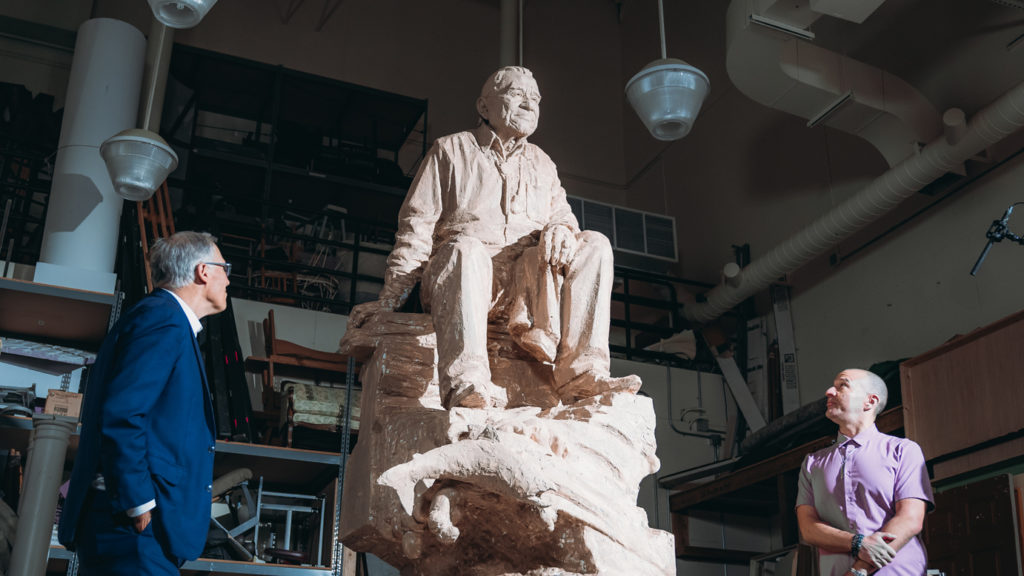Washington State passed legislation in 2021 to send a statue of activist and humanitarian Billy Frank Jr. to National Statuary Hall in Washington, D.C. The statue is currently slated for installation in 2026.
Featured video
What defines a legacy? Billy Frank Jr. Day is celebrated every year in early March. The event brings together teachers, students, and Tribal citizens to build trust and recognize Billy’s lasting impact. In this video, travel to Billy Frank Jr. Day 2024 and see how Billy’s legacy and the statue project to honor him is inspiring the next generation. Produced by Children of the Setting Sun Productions, with additional footage by Ray Whitehouse and the Architect of the Capitol.
Featured photo
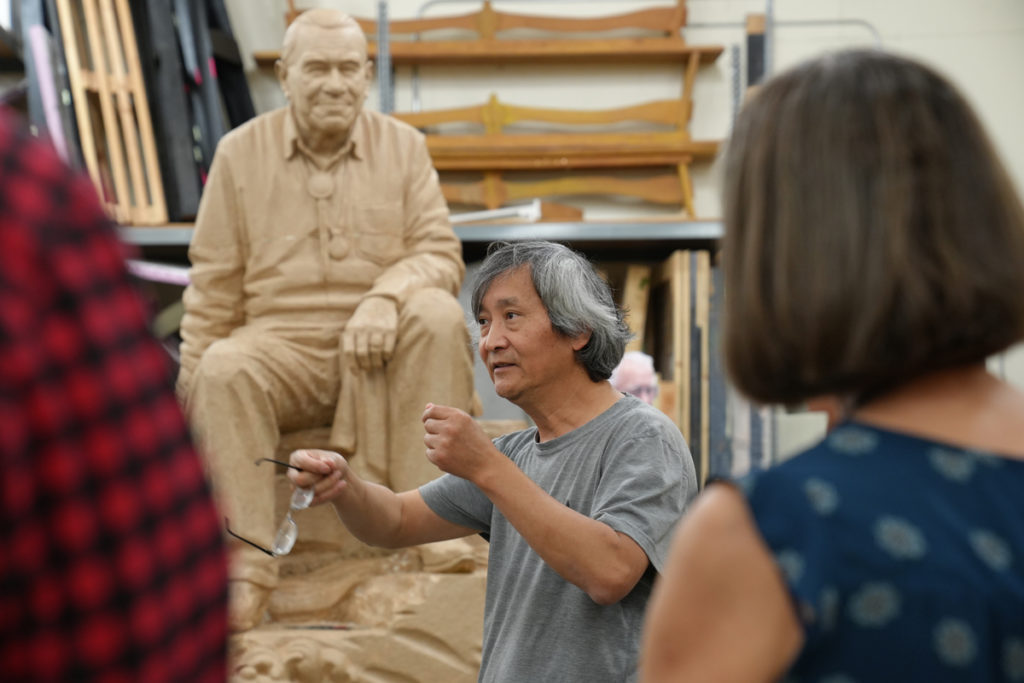
September 5, 2024: artist Haiying Wu addresses a group visiting his workspace. Wu has completed most of this work on the top half of the clay model. ArtsWA and the Nisqually Indian Tribe partnered with South Puget Sound Community College to host Haiying while he works. Thanks to this partnership, Haiying’s workspace is open to the public several days a week.
Committee meetings
Upcoming meetings:
October 2024 | Date and agenda TBD
Wednesday, October 11 | 3:00 p.m. – 4:00 p.m. | Click here to read the agenda
Tuesday, March 15, 2022 | 9:00 a.m. – 10:30 a.m. | Click here to read the agenda
Friday, April 22, 2022 | Art selection subcommittee | 9:00 a.m. – 10:00 a.m. | Click here to read the agenda
Tuesday, May 17, 2022 | 9:00 a.m. – 10:30 a.m. | Click here to read the agenda
Tuesday, June 14, 2022 | 9:00 a.m. – 10:30 a.m. | Click here to read the agenda
Tuesday, August 16, 2022 | 9:00 a.m. – 1:00 p.m. | Click here to read the agenda
Friday, January 13, 2023 | 8:30 a.m. – 9:30 a.m. | Click here to read the agenda
Wednesday, January 10, 2024 | 3:00 p.m. – 4:00 p.m. | Click here to read the agenda
Wednesday, July 10, 2024 | 3:00 p.m. – 4:00 p.m.
News & updates
Sign up for email updates for with the latest information about the Billy Frank Jr. Statue Project.


